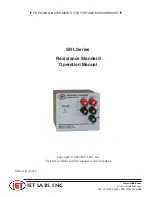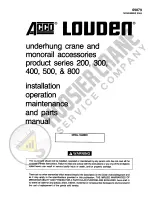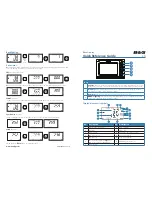
EXP-925
Midtronics B.V. Hoofdveste 6 - 8 Houten NL
www.midtronics.com
11
Chapter 3: Test Preparation
Inspecting the Battery
Before starting the test visually inspect the battery for:
•
Cracked, buckled, or leaking case. If you see any of these
defects, replace the battery.
•
Corroded, loose, or damaged cables and connections.
Repair or replace them as needed.
•
Corrosion on the battery terminals, and dirt or acid on
the case top. Clean the case and terminals using a wire
brush and a mixture of water and baking soda.
•
Low electrolyte level. If the electrolyte level is too low,
add distilled water to fill up to 1/2 above the top of the
plates and fully charge the battery. Do not overfill.
•
Corroded or loose battery tray and hold-down fixture.
Tighten or replace as needed.
Testing Out-of-Vehicle
The preferred battery test location is in the vehicle. However,
if you plan to test out of the vehicle:
•
Always disconnect the negative cable from the battery
first and reconnect it last.
•
Always use a carry tool or strap to lift and transport the
battery.
Testing In-Vehicle
The preferred test position is at the battery posts. If you must
test at a remote-post location, it should have both a positive
and negative post.
At the start of the test, make sure all vehicle accessory loads
are off, the key is not in the ignition, and the doors are closed.
Connecting the Battery Test Cable
CAUTION:
Do not connect the tester to a voltage source
greater than 30 Vdc.
Connect the battery test cable to the tester by first aligning
the cable connector’s 6 pins with the holes on top of the
tester. Firmly insert the connector and tighten the locking
ring.
Connect the clamps to the battery: the red clamp to the
positive (+) terminal and the black clamp to the negative (–)
terminal.
If you connect the clamps in the wrong polarity (positive to
negative or negative to positive), the tester displays CLAMPS
REVERSED! Reconnect the clamps correctly.
To make sure both sides of the clamps are gripping the
terminals, rock the each clamp back and forth. A poor
connection will prevent testing, and the tester will display
the message CHECK CONNECTION. If the message reappears
after you have correctly reconnected the clamps, clean the
terminals and reconnect.
Connecting an Accessory Cable
If you are using an accessory cable, plug it as you would a
phone jack into the accessories port on top of the tester. It
locks automatically into the port. To remove it after testing,
press the lever and pull the connector out.
Setting User Preferences
Before starting your test you may want to customize the use
of your analyzer by setting preferences in the Utility Menu.
The menu has settings for the display’s date and time, the
contrast and backlight time, a utility to customize printouts
for the optional IR printer, among others.
To conserve the analyzer’s internal batteries, the tester will
turn off after 30 seconds of inactivity.
Chapter 3: Test Preparation












































